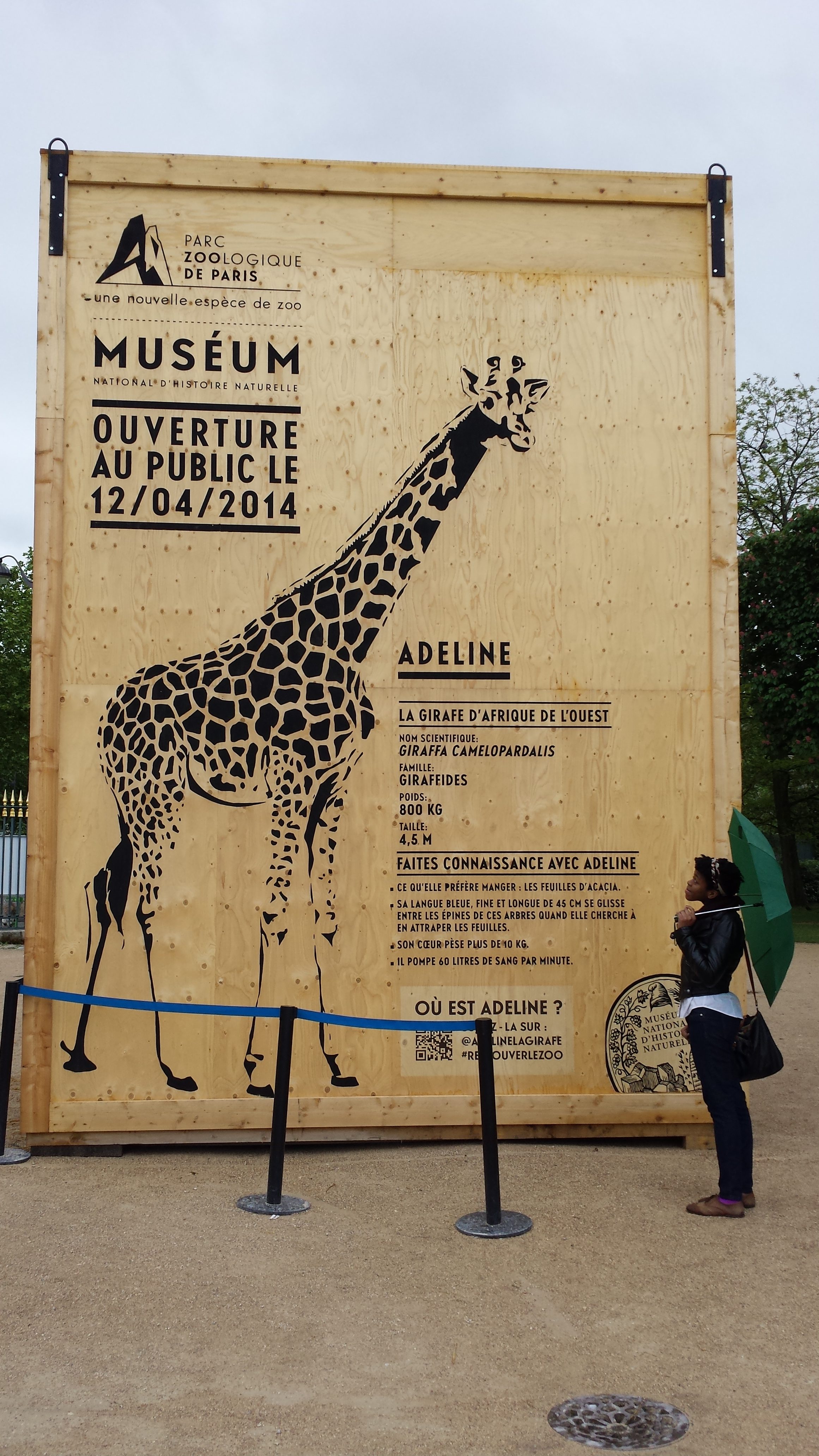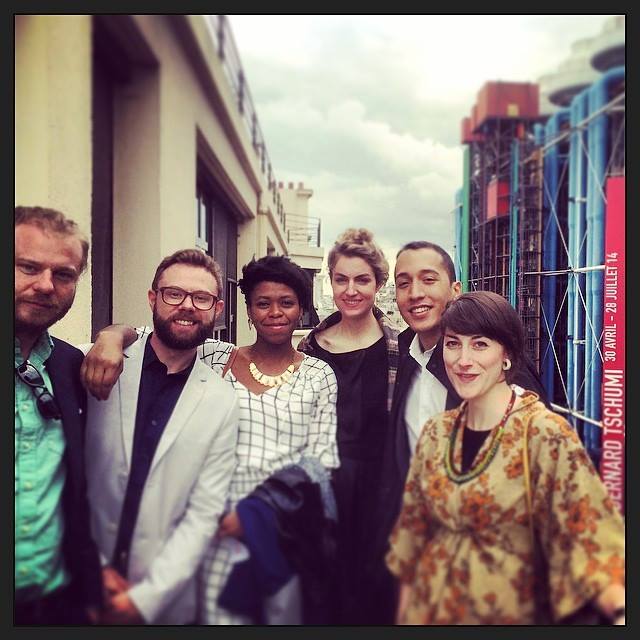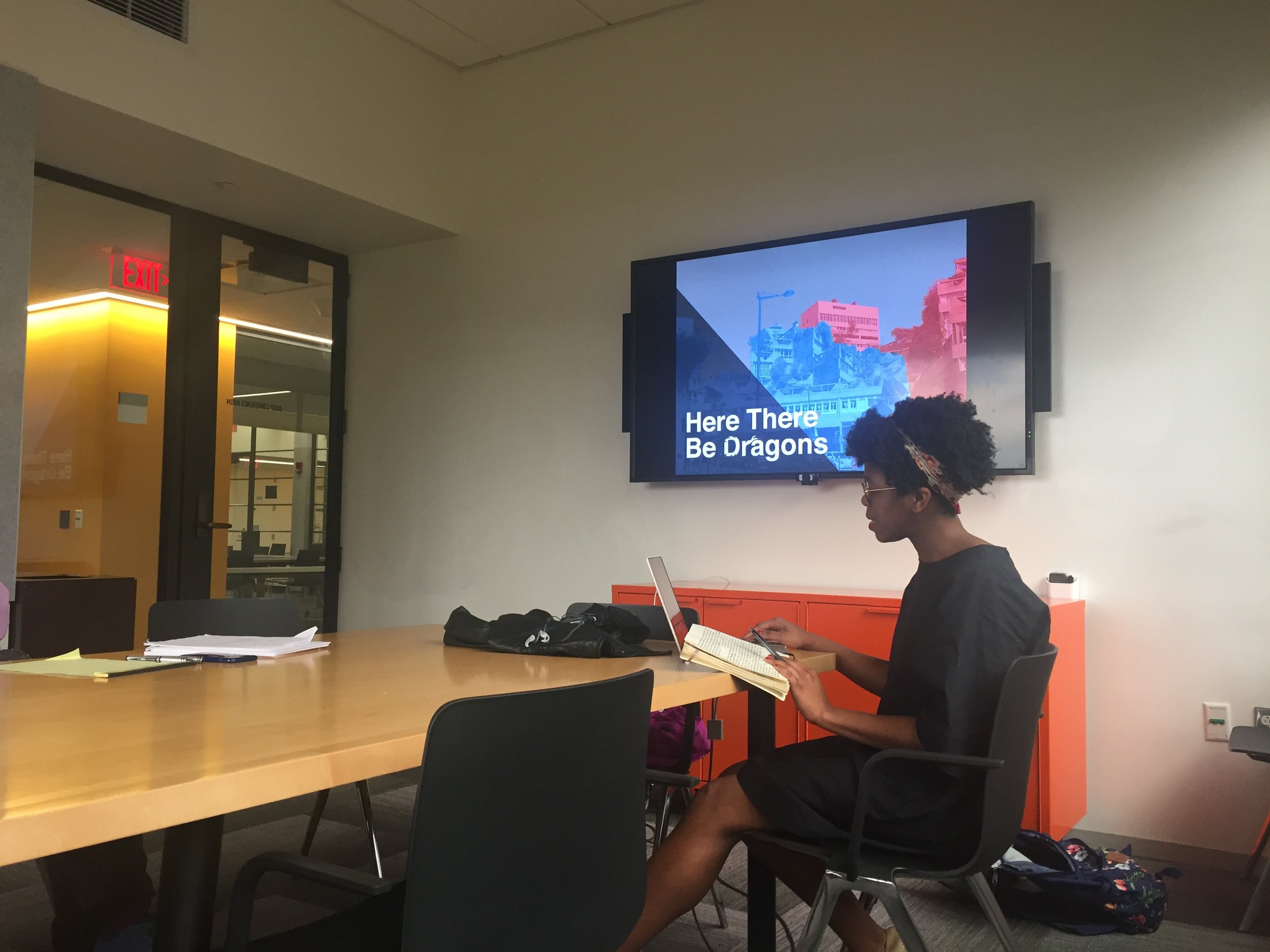Enthusiasm and Effort: Jessica Myers on Staying Critical and Learning on the Fly
By Julia Gamolina, cover image by Billy Ndengeyingoma Coming from a background in architecture, urban theory, and design, Jessica has worked in diverse practices, ranging from podcaster and writer to strategist, in New York and Paris. Jessica received a Bachelor’s of Architecture with concentrations in French and Urban Studies from Princeton University. After working for Bernard Tschumi Architects for several years, she went on to receive a Master’s of City Planning from Massachusetts Institute of Technology. Her research has focused on topics ranging from the political power of public edifice in New Orleans’ municipal food markets to the intersection of security and identity politics in Parisian public space. Her podcast Here There Be Dragons takes an in depth look at the intersection of identity and security politics in public space through the eyes of New Yorkers and Parisians. In her conversation with Julia Gamolina, Jessica talks about her varied experiences, advising young architects to get their hands dirty and not be too precious about their work.
JG: How did your interest in architecture develop?
JM: When I was about eleven, I had a history teacher who took us through Greek and Roman history - she was very focused on the architecture, so we talked a lot about temples and how they were built. I was really interested and did all this middle-schooler research [laughs]. At that point, I thought I wanted to be a preservationist.
Later, my school had Maya Lin come and speak to us about her experiences with land art and with the Vietnam memorial. Hearing about her experiences was very important for me - I remember thinking, “Wow, this can be more than just preserving temples – you can build them too!”
You then studied at Princeton and held some really interesting internships during your time there.
I was at Superfront for one summer and at the Pompidou Center for the next. Superfront is an organization based in Sunset Park, Brooklyn, that promotes radical and contemporary architecture. My position was basically to do whatever was needed [laughs]; they were very scrappy and grassroots at the time. Every year, they had a summer competition in the form of a charrette, where they set a prompt and everyone worked like crazy for a couple of hours on the factory floor. People like Vito Acconci were in the jury. Installing the design of the winners of this competition, two women, was my main project that summer.
At Superfront, I saw that just because someone is an amazing designer and thinker, doesn’t mean they have the technical skills needed to carry out a built project. One of the winning designers came to the construction site - a docking bay between two factories, with nails, gravel, and glass everywhere - in basket-weave flats [laughs]. I learned that often times, people think a project will spring from the head of Zeus perfectly formed into the world, and the experience of Superfront showed me the muck-raking and effort required to bring a piece of large-scale built work into fruition.
I imagine your experience at the Pompidou Center was a little different – not a lot of muck-raking.
Exactly – the Pompidou was definitely not in the factories of Sunset Park [laughs]. I worked at the Pompidou as an intern archivist. My task was to digitalize parts of their archive, and compiling a list of graphic designers that are particularly influential and important, especially ones that are French.
I saw beautiful pieces by the likes of Jan Tschichold, and I also got to sit in acquisitions meetings, which were really cool. You get to see the Pompidou say things like, “Maybe we should acquire this because MoMA doesn’t have it.” There’s this trans-nationalist project built into the art world, a competition for being the best arbiter of modern and contemporary art on a global scale, and having the best eye for these things. I found that aspect of the inner workings at the Pompidou funny and fascinating.
What did you do after you graduated from Princeton?
During my senior year, since I pursued a four-year undergrad degree that was more broadly focused, I thought to myself, “Am I going to be able to get a job in design with this theory-based and theory-heavy degree?” I was indeed struggling to find a design job – I applied all over the place, maybe to 85 jobs, before finding a position at Bernard Tschumi’s office that was very administrative and publications-focused. In one regard that was disappointing because I was trying to be an architect, but at the same time, in that position I learned a lot about the meat and potatoes of how an architecture firm works.
A lot of the job was coming into work and putting out continuous fires. People would come to me and say, “We need to figure out our Swiss building taxes, in French, send them to the client, and pay them – can you do that?” The answer was often, “I will figure it out.” And you do! I was trying to be that team-player that people can turn to and rely on and learned that even if I didn’t have prior expertise in whatever they needed, I could be a form of support and have the grit and enthusiasm to figure it out.
What was the best project you worked on there since you faced a variety of tasks?
An important project when I was there was the huge retrospective he was about to do, funnily enough, at the Pompidou Center! We dug through every inch of his archive and the preparation was a year, a year, of coordinating madness. We were also in touch daily with the Paris office; they were six hours ahead, so figuring out how to get ready for deadlines with the time difference, was one aspect of the flurry.
In this project, every day brought a new challenge that we had to overcome as soon as possible - for example, figuring out how to ship fragile, 25-year old models, all the way to Paris. Being on the other side of Pompidou, instead of being inside as an archivist, was like helping an artist set up and present their work. My time at Tschumi’s office was definitely a foundational experience about the spectrum of activity, besides document production and design, that goes on in an architecture office.
What did you learn about the profession not being in a design context at a firm?
I learned a lot about architectural publications, though this focus started even in undergrad. Princeton is a very theory-heavy program so there is a strong culture of review writing and a lot of founders and contributors of famous architecture reviews, like Grey Room and Assemblage, pass through there. I find myself being at once very exasperated with architecture publishing because I think it’s sometimes a very anti-critical thing and very image-based, which doesn’t necessarily talk about architecture in a way that connects to people outside of the profession. I was very involved in publications at Princeton, and then again at Tschumi’s where that focus was really robust, so I found people there who were really interested in it too, and nice, and easy to talk to, and they became people who I could ask for feedback and guidance on my writing.
You then went on to pursue your Master of City Planning at MIT. How did your interest in city planning develop from all these experiences and why MIT?
Because I am interested in the politics of space and the sociocultural aspects of the built environment, architecture, although really interesting in this regard, felt too constrained. I think if you can’t conceptualize the scaling up of what a building is for, what it is fitting into, who it is benefiting, and who is it displacing, that you’re not totally understanding the power of what architecture is. As a designer, you have a lot of implicit power on the larger picture, so I wanted to see architecture how architecture works in terms of urbanism and regionalism.
I already had a design background, so I went to MIT to round my background out with the technical nitty gritty side of things, and to learn about economics, statistics, GIS, and more. The program at MIT does take a social, political, and cultural view on the work the students produce, which was also important to me.
Let’s talk about your podcast, Here There Be Dragons.
The podcast started in MIT, through the Community Innovator’s lab, but is now an independent piece on iTunes and SoundCloud. With my work at MIT, I was really interested in and thinking a lot about what was happening politically in the US, like Black Lives Matter and immigration, and wondering how to frame these discussions in the context of the built environment. The history of policing and violence has affected the way that people use public space and the way they think about identity and security. I wanted to see how people negotiate their identities through the space of the city, especially as a function of their safety.
The first season was focused in New York and was very racially diverse; I did seven interviews with seven New York natives from every borough except, unfortunately, from Staten Island. The second season was thirty-two residents of Paris, and four researchers, adding what I thought was lacking in the first season in terms of diversity in age, location in Paris, immigration status, etc. People talked to me about their experiences with the police, their experiences with immigration, and their experiences with the space they’re in. I paid really close attention to what people were saying, and realized that my concepts of policing and immigration were actually concepts of gentrification, diversity, and terrorism to them. I have learned enormously from doing this type of field work and can now really frame the questions of how security politics and identity politics can intermix with public space.
Where did the title come from?
The title is based on Viking exploring – there was a cartographic tradition that when a place is dangerous or yet unexplored, they drew a dragon over it. I wanted the title to mean that the “dragons” in people’s lives have a lot to do with these spatial and social politics. In the interviews, I also have people draw maps – I give them a base map of their city and ask them to circle where they feel uncomfortable in red, where they feel comfortable in blue, and then I ask them to draw their everyday trajectories.
You’ve had so many varied experiences. What are the biggest lessons you’ve learned?
To get your work out into the world and not be so precious that no one ever sees it. The idea is to know when to stop production and create a narrative. Even if you don’t feel ready to put a piece out there, put it out there. It’s better that it exists in the world than it exists in a dark corner of your apartment.
What have been challenges that you’ve faced?
The job market has definitely been a challenge [laughs]. What does a design job look like for someone who is theoretically trained - does that even exist? It’s also a struggle to keep a sense of theory and a sense of criticality in design - a lot of people in the professional world have let it go as a value, but I think it’s really crucial.
What about some highlights?
Seeing the Pompidou retrospective finished was amazing. Everybody who worked on that put in so many late nights, so all of it coming to fruition was really wonderful. I’m feeling very good about the podcast at the moment too, because it’s much more polished now than it was when I started. It’s very satisfying to see your own progress.
You are still early in your career, but what has been your general approach so far?
My approach has been always giving myself the license to figure things out - to be in a place where I am uncertain and don’t know how to do something and know that that’s ok and that I will learn. I also feel that commitment is very important – when you say you’re going to execute something, execute it. Another guiding principle is that the subjective is valuable - subjective forms of research, subjective forms of work. People believe that an “objective” approach, a technocratic approach, or a scientific engineering approach, is the way into a perfect architecture - the subjectivity of those practices may be varied, but it’s still there.
Where do you see yourself in 5 or 10 years? How would you like to contribute?
Since graduating from MIT, I’ve been working as an Architectural Strategist for LaPlaca Cohen in New York. I'm now also doing editorial consulting for a social justice book series for union members. In the long run, I’d like to situate myself somewhere along the intersection of media, design, and social engagement. I’m not completely sure what that looks like yet, but I do think I am curating a set of skills for myself to be able to step into that work. I think it’s particularly valuable because, as we can see with the ubiquity of apps and the ubiquity of tech, the way those products make a convincing argument is definitely through the design. How can we take those things, and media, and work it into the realm of social engagement? I’d like to be working on answering that question for the next while.
[author] [author_image timthumb='on']http://architexx.org/wp-content/uploads/2018/01/MA.jpg[/author_image] [author_info] With experience in design, business development, PR, and marketing, Julia Gamolina is focused on communicating identity in the built environment. She is a regular contributor to sub_texxt, interviewing women in architecture on their career development. She is also on the Young Leader's Group committee for the Urban Land Institute (ULI), and is a Founding Member of the Wing. Julia received her Bachelor of Architecture at Cornell University, graduating with the Charles Goodwin Sands Memorial Medal for exceptional merit in the thesis of architecture.[/author_info] [/author]









